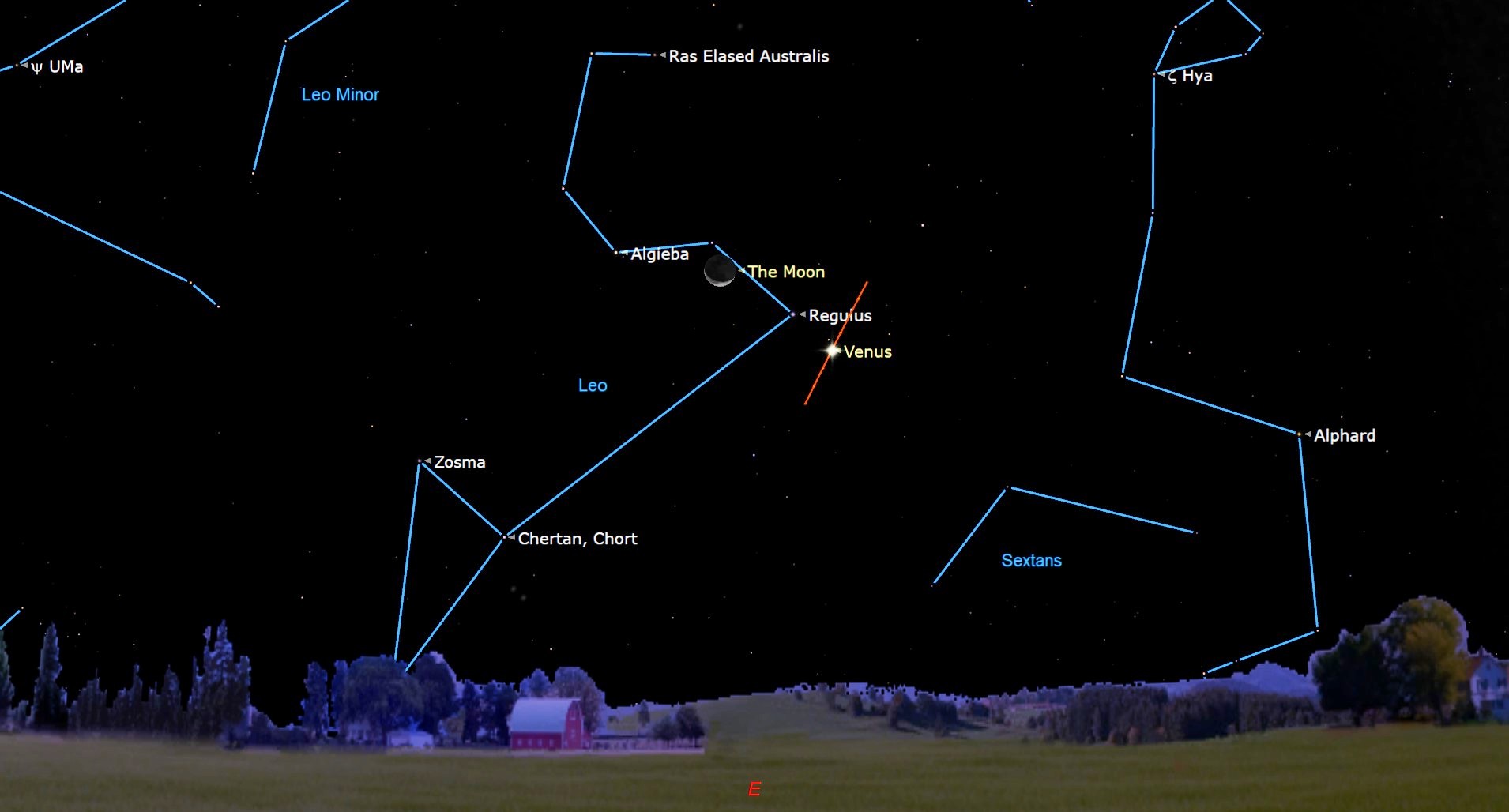See the moon snuggle up to Venus early on Oct. 10
As the moon makes its close approach to the second planet from the sun, the two celestial bodies will also be in conjunction.

The moon has an early morning date with the planet Venus on Tuesday morning as it makes a close approach in the sky to the second planet from the sun.
At around the same time, the moon and the planet, named after the Roman goddess of love, will share the same right ascension, an arrangement that astronomers call a conjunction.
From New York City, the 25-day-old waning crescent moon will be visible soon after it rises at around 02:44 EDT (0644 GMT), according to In the Sky. Venus will rise a little later at around 03:11 EDT (0711 GMT), meaning that the conjunction and close approach between the two bodies should be visible from around that time. The arrangement between the moon and Venus will disappear when the planet sinks below the horizon at around 16:25 EDT (2025 GMT). The moon will set slightly later at around 16:58 EDT (2058 GMT).
Related: Night sky, October 2023: What you can see tonight [maps]
During the conjunction, both the moon and Venus will be in the constellation Leo. Both will have a right ascension of 10h09m00s at the exact moment of conjunction while the moon will have a declination of 16 degrees, 4 minutes N and Venus will have a declination of 9 degrees, 35 minutes N.
The lunar face will be just 10% illuminated during the close approach to Venus and will have a magnitude of around -10.6, with the minus prefix indicating a bright object over Earth. (On the magnitude scale used by astronomers, lower numbers signify brighter objects). Venus will have a magnitude of around -4.5 on Tuesday morning, and the moon will be a good guide to spotting the planet.
Despite this being a close approach, the two bodies will still be too widely separated to be visible together in a telescope's narrow field of view. However, they'll be visible together in wider field of view binoculars.
Breaking space news, the latest updates on rocket launches, skywatching events and more!
Despite the fact that Venus is only the second planet from the sun, it is the solar system’s hottest body with a surface temperature hot enough to melt lead. Similar in both size and composition to Earth, Venus is a hellscape blanketed by thick clouds composed mainly of sulfuric acid. The secret of Venus’ soaring temperatures is its dense atmosphere, which is driving a runaway greenhouse effect, making the planet hotter than Mercury despite this tiny planet being the closest world to the sun.
Skywatchers who miss the moon’s close approach to Venus on Tuesday will get another great opportunity to spot the scorching hot planet on Friday, Oct. 20, 2023, when the planet reaches its highest point in the sky — 42 degrees over the horizon — of its current period of early morning appearances or “apparitions.”
If you are hoping to catch a look at the moon and Venus, our guides to the best telescopes and binoculars are a great place to start.
If you’re looking to snap photos of the night sky in general, check out our guide on how to photograph meteor showers, as well as our best cameras for astrophotography and best lenses for astrophotography.
Editor’s Note: If you snap an image of the moon and Venus and would like to share it with Space.com, send your photo(s), comments, and your name and location to spacephotos@space.com.

Robert Lea is a science journalist in the U.K. whose articles have been published in Physics World, New Scientist, Astronomy Magazine, All About Space, Newsweek and ZME Science. He also writes about science communication for Elsevier and the European Journal of Physics. Rob holds a bachelor of science degree in physics and astronomy from the U.K.’s Open University. Follow him on Twitter @sciencef1rst.
